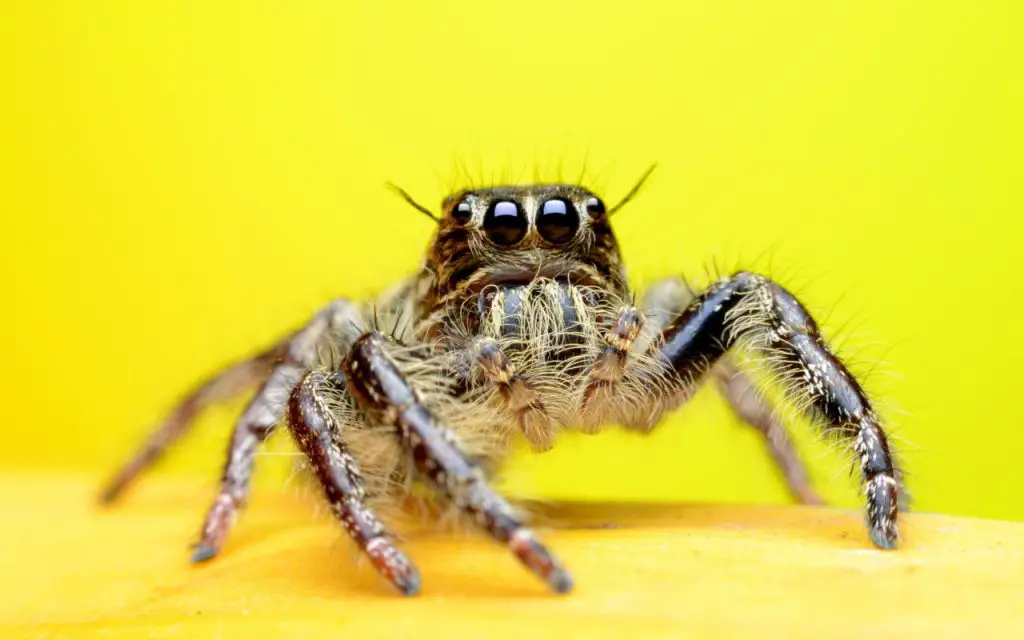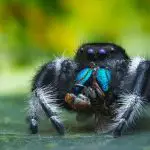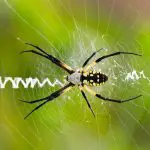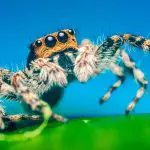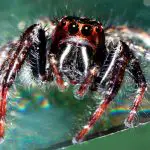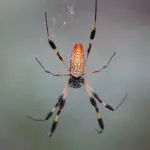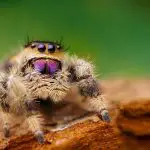Last updated on February 1st, 2023 at 10:01 am
Can jumping spiders eat ants? Though ants are able to sting and bite to defend themselves, they are in fact favourite prey for some species…
Whilst many jumping spiders are generalists, and eat anything of similar size, others are in fact ant specialists. Some species even have an appearance that mimics ants, so that they can get closer to them and attack. So, to answer the question, jumping spiders can eat ants, and some even prefer them.

The Salticidae family consists of jumping spiders and is the most numerous family of spiders. It should come as no surprise that jumping spiders vary greatly in appearance, habitat, and the kind of food they seek.
Many jumping spiders don’t seem to prefer any one kind of prey, but literally hundreds of species do prefer ants. Many of these species also have an appearance that mimics an ant.
The benefit of this is two-fold: they can more easily approach their ant prey, and make predators think they might be able to sting like some ants can.
There are so many different species. The one good thing that all jumping spiders have in common, however, is an exceptional visual cues and body length. In every case, these arachnids have four separate sets of eyes at the front of their head. The front are big eyes.
There are many different kinds of jumping spiders. Some are boring, while others flaunt a bewildering variety of patterns and hues. The peacock spider’s blue, scarlet, and yellow abdomen (Maratus volans) or the black-and-white stripes of the zebra spider.
Both of these species are classified as spiders (Salticus scenicus). A species of jumping spider native to Europe, Saitis barbipes, is distinguished by the presence of a red “headband” of pigmentation. They also have stripes of a similar color on their third set of front legs.
Will jumping spiders eat dead insects?
The remains of deceased insects are not tasty to jumping spiders. Wild jumping spiders will consume practically any unlucky bug to come into contact with them.
Numerous jumping spiders are in a state of perpetual motion and are always on the lookout for prey. Some larger animals just wait in one place for their prey to wander into view.
But whatever manner of prey acquisition a jumping spider employs, the majority of their diet consists of feeder insects in some form or another. Wild jumping spiders consume a wide variety of insects, including flies, grasshoppers, small crickets, small frogs and even other species of spiders.
They consume nectar, which results in their formal classification as omnivores despite the fact that they are mostly carnivorous.
Even though they are fearsome, jumping spiders do not threaten human beings. In most cases, they will not bite unless they are at imminent risk of being crushed.
The spider bite is quite gentle and frequently does not leave a mark. This fact contributes to their popularity among individuals who keep spiders as pets since it makes them easy to care for. You can also get these species of spiders at a pet store.
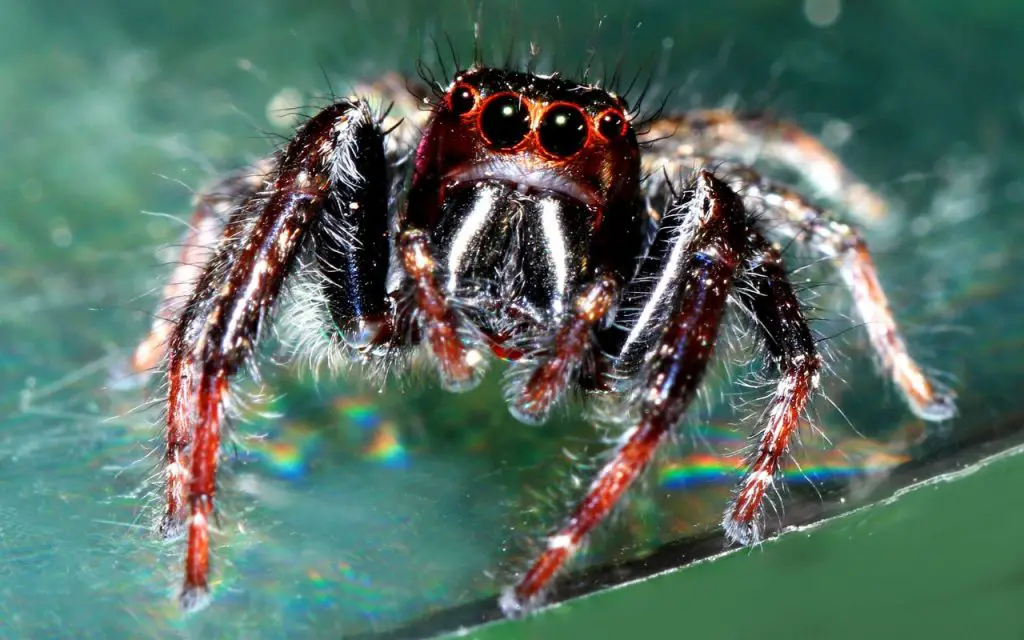
What do jumping spiders eat?
Insects such as flies, moths, and grasshoppers are the primary prey of jumping spiders. Although it has been documented that they will occasionally consume nectar, they mostly feed on meat.
In general, jumping spiders will consume anything that they are able to grasp with their chelicerae (jaws). Their preferred foods are flies, mealworms, moths, and other tiny, vulnerable animals such as these.
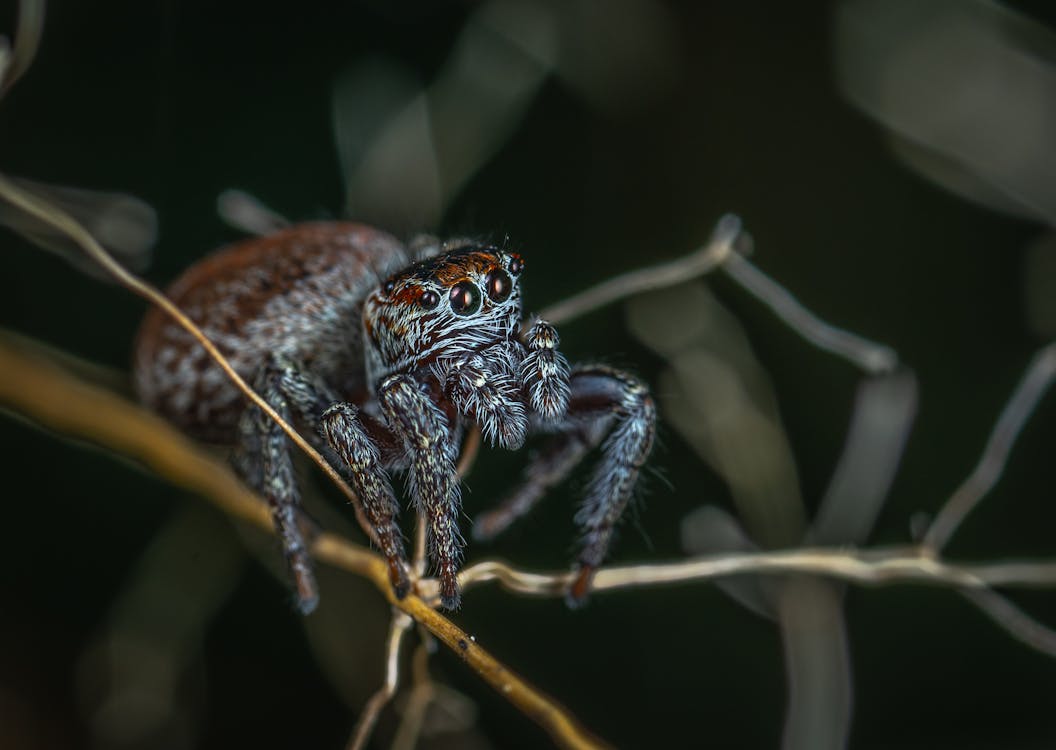
If given the opportunity, regal jumping spiders will also consume other spiders, crickets, and cockroaches in addition to these prey items. Their prey includes the following:
- Fruit flies
- Blue and green bottle flies
- Fly larvae
- Grasshoppers
- Katydids
- Wasps
- Bees
- Butterflies
- Moths
- Crickets
- Other spiders
- Worms
- Mealworms
- Wax worms
Even though jumping spiders consume meat most of the time, we cannot classify them as obligate carnivores due to the fact that they have been seen to consume nectar on several occasions.
Even among the species of jumping spiders, there is one known as the Bagheera kiplingi that feeds largely on plant matter.
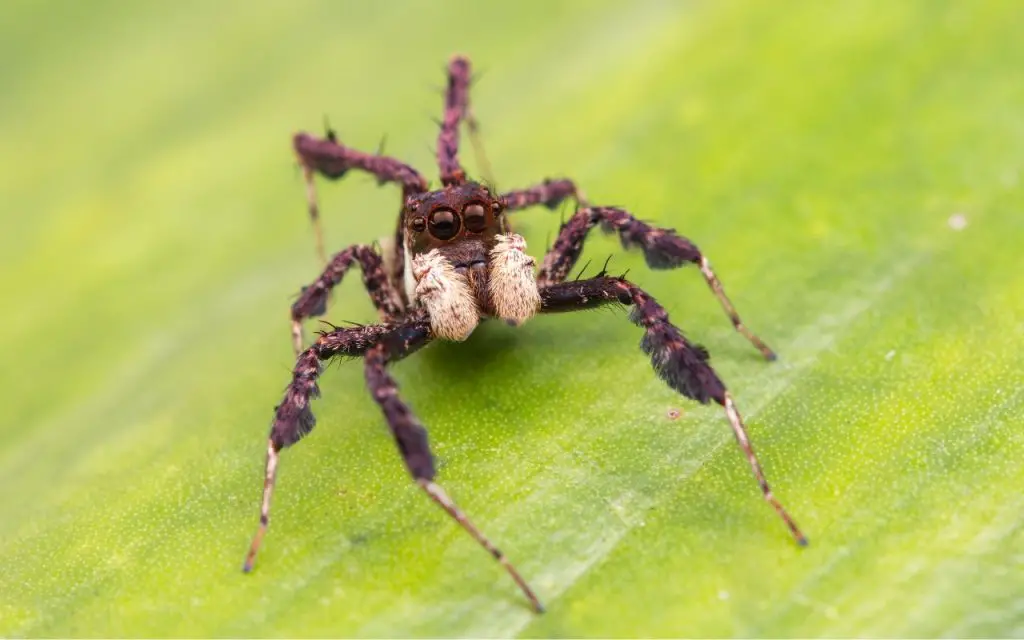
Do jumping spiders eat rolly pollies?
Rolly pollies are, in fact, consumed by jumping spiders. In addition, jumping spiders consume –
- isopods
- cicadas
- centipedes
- grasshoppers
- daddy long legs
- fleas
- dead flies
- drain flies
- earthworms
- earwigs
- flies,
- small insects,
- and monarch caterpillars.
Because they are all carnivores, jumping spiders will consume most of their food source in the form of flesh, including a variety of tiny animals and insects.
Jumping spiders use their front pair of legs to capture prey.
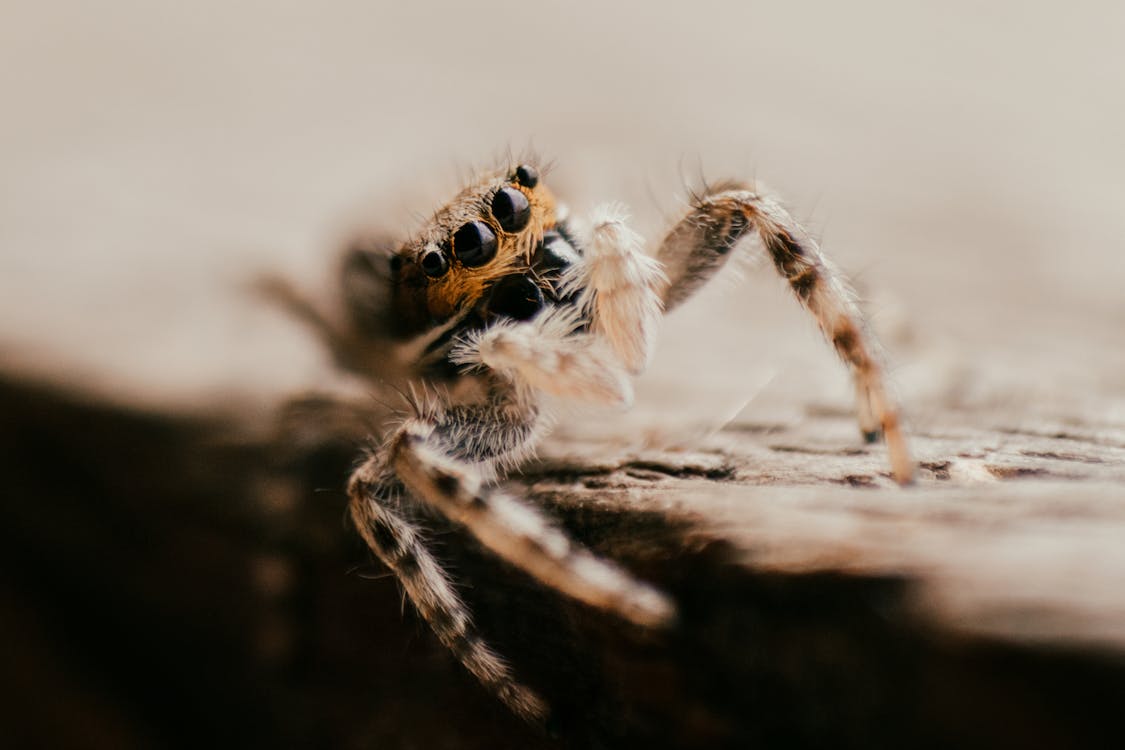
Most of a jumping spider’s diet in the wild will consist of various types of insects. During the colder months, you may give them cricket larvae to eat.
Do jumping spiders eat fruit?
It’s okay to let jumping spiders snack on some fruits once in a while, but you shouldn’t make it their primary source of nutrition. Their regular diet provides the body with the essential elements it needs to function correctly.
You may try feeding them fruits if you ever find yourself in a situation where you run out of food, but this should just be a stopgap remedy.
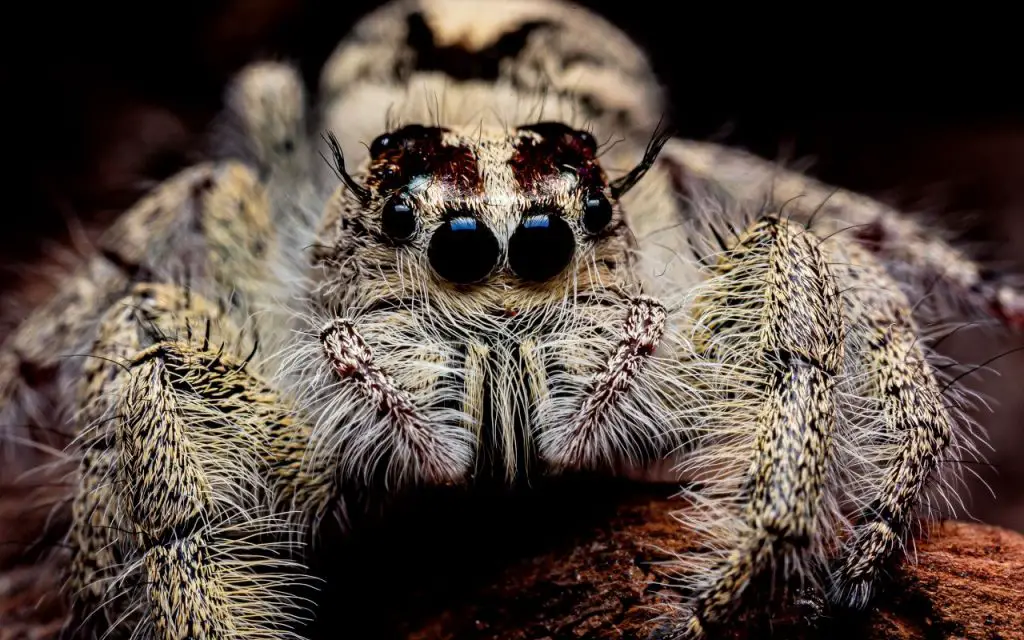
Do jumping spiders drink water?
Yes, jumping spiders drink water. The majority of Jumping spiders obtain their water supply from condensate and precipitation.
In addition, two different species, a jumping spider from the genus Peckhamia and a jumping spider named Bagheera kiplingi, feed on the nectar and juices of plants.
They extract the chemicals and digestive juices from the plants by piercing them with their fangs in certain locations. Because of this, they are the only omnivore spiders in the world.
You can prevent your jumping spider from becoming dehydrated and assist provide a healthy home for it by maintaining a damp environment within its enclosure. Because jumping spiders often do not drink water directly from the container, keeping the jumping spider’s cage damp rather than dry is best.
Nevertheless, you should also take care not to drown the jumping spider. Even though it might not appear that they drink much water, a jumping spider will often consume it on a daily basis.
How often do jumping spiders eat
Some jumping spiders will eat every day, while others may take periodic vacations from eating that can last up to a week.
The typical jumping spider only consumes food once every two to three days. However, Spiderlings consume food much more regularly, either once or once every other day.
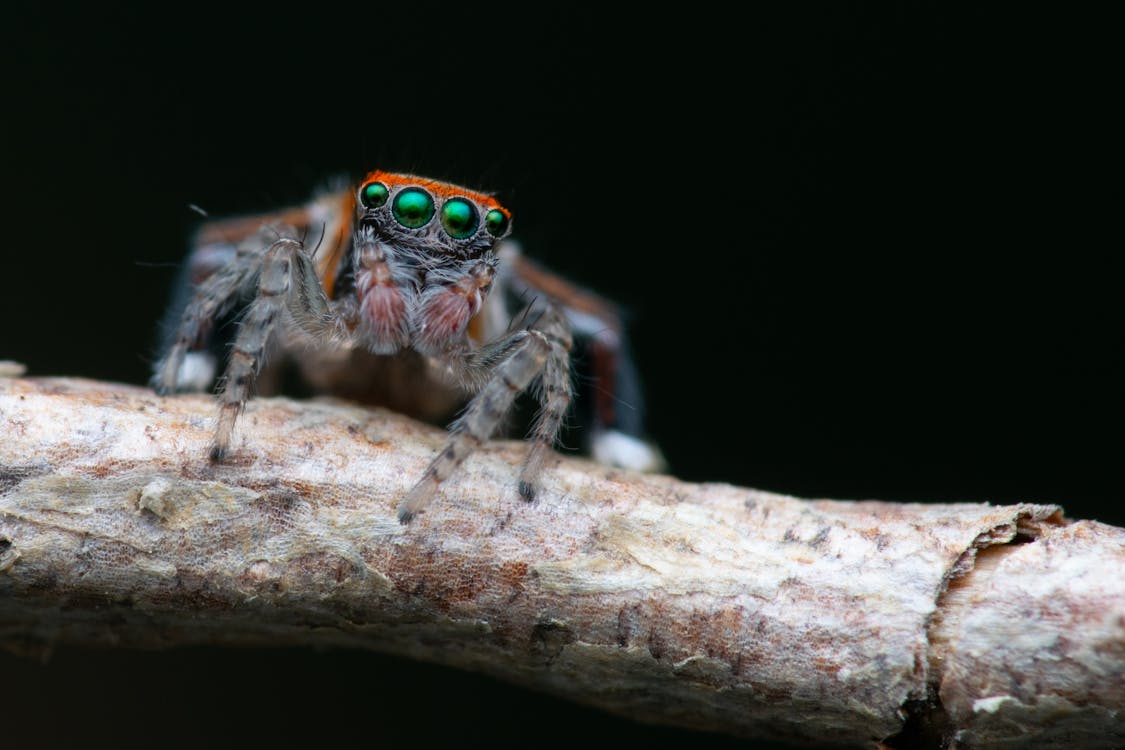
In general, young spiders consume more food than adults, female spiders consume more food than male spiders.
Elderly, molting, or pregnant spiders may go for extended periods of time without consuming any food at all. Mother spiders keep their egg sac near until the babies come out.
How long can a jumping spider go without eating?
It is possible for a typical spider to survive without food for 4–8 weeks, but only around 3 weeks without water. This indicates that spiders can survive without food for longer than they can without water.
The American common house spiders has the ability to put away a particular reserve of food most of the time. However, if that reserve is depleted, they have the potential to survive without food or water for anywhere between four and eight weeks on average.
Wolf spiders that have reached adulthood can survive without food for more than three weeks, but in times when prey is rare, they may modify their metabolism. They could survive without water for roughly a week, but anything beyond that would be straining their limitations.
On average, Black Widows can live without food for several months, and for only a few weeks without water.
However, there have been documented cases of Black Widow spiders that have been able to survive without food for almost an entire year. This is because they are able to slow their metabolism down to extremely low rates.
Along with the black widow, brown recluse is extremely dangerous.
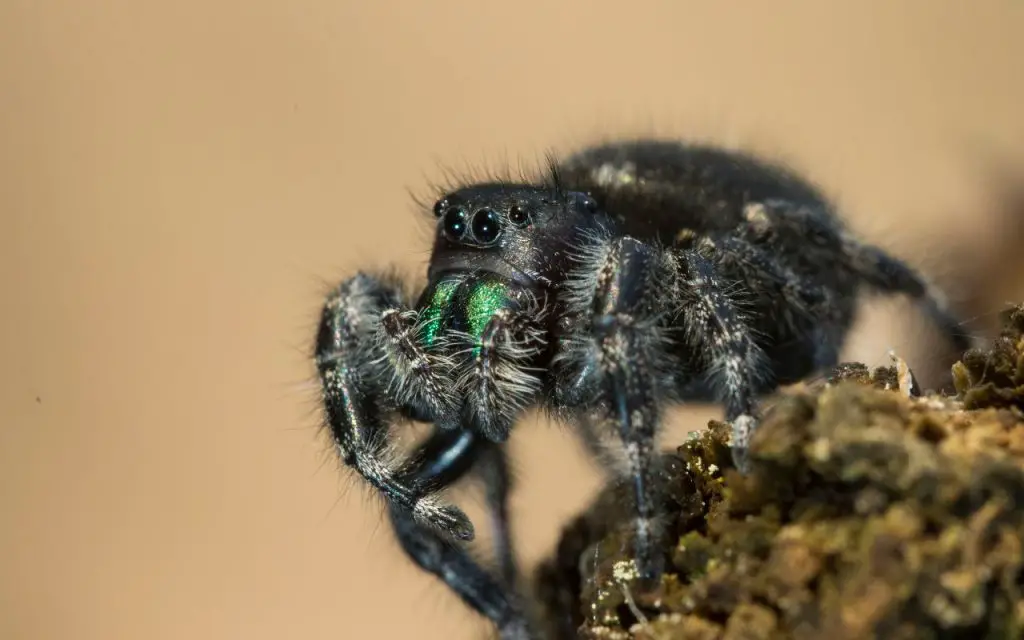
FAQ relating to if jumping spiders can eat ants
What kind of insects do jumping spiders eat?
Insects such as flies, moths, and grasshoppers are the primary prey of jumping spiders. Although it has been documented that they will consume nectar on occasion, they mostly feed on meat.
In general, jumping spiders will consume anything that they are able to grasp with their chelicerae (jaws). Their preferred foods are flies, mealworms, moths, and other tiny, vulnerable animals such as these. They make their own web to catch prey.
If given the opportunity, jumping spiders will also consume other spiders, crickets, and cockroaches in addition to these prey items. Their prey includes the following:
- Fruit flies
- Grasshoppers
- Moths
- Bees
- Butterflies
- Worms and more
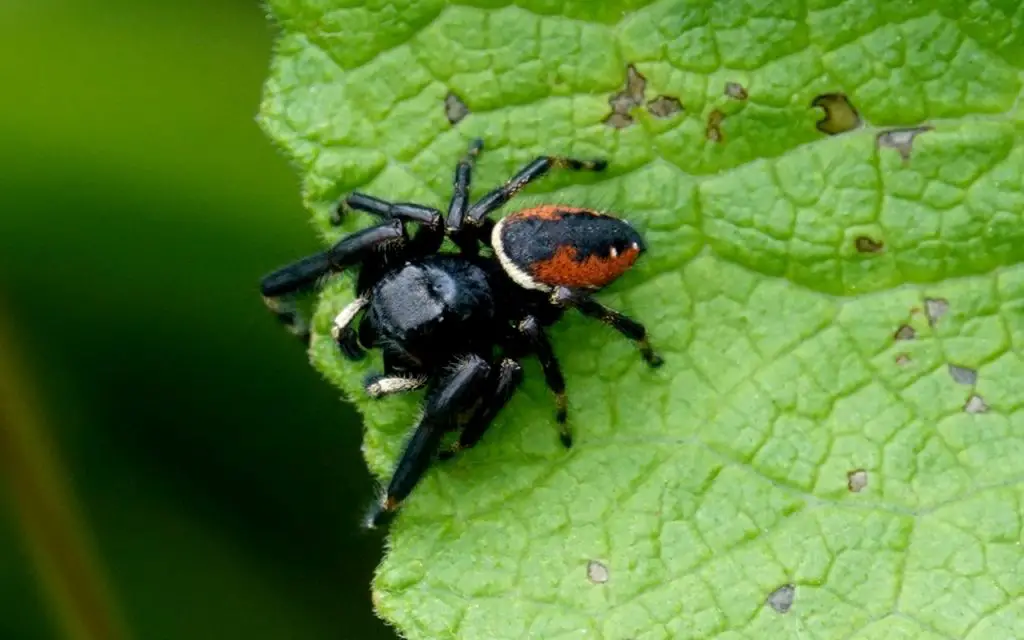
What kind of spiders eat ants?
One of the most frequent types of arachnids found around the globe is the spider. They have a tremendously wide range of diversity and can be discovered on all continents with the exception of Antarctica.
There are approximately 3,400 different species of spiders, and just in North America they may be found.
Although certain kinds of spiders like to consume ants, this is not the case for all of them. Some examples of these species include the lynx spider and black widow spiders.
Other types of spiders will consume different species of ants if they are accessible, such as the jumping spider.
Ants are the sole food of the Zodarion rubidium spider, which is another kind of predatory spider. They are ant-mimic jumping spiders, as researched by Cornell University. They even have a physical structure that is similar to that of ants.
The nutrition of the Zodarion rubidium spider, which consumes nothing but ants, is extremely important to the spider’s ability to live because different portions of an ant have varying levels of nutritional value.
The green jumping spider of Australia may also occasionally eat ants.
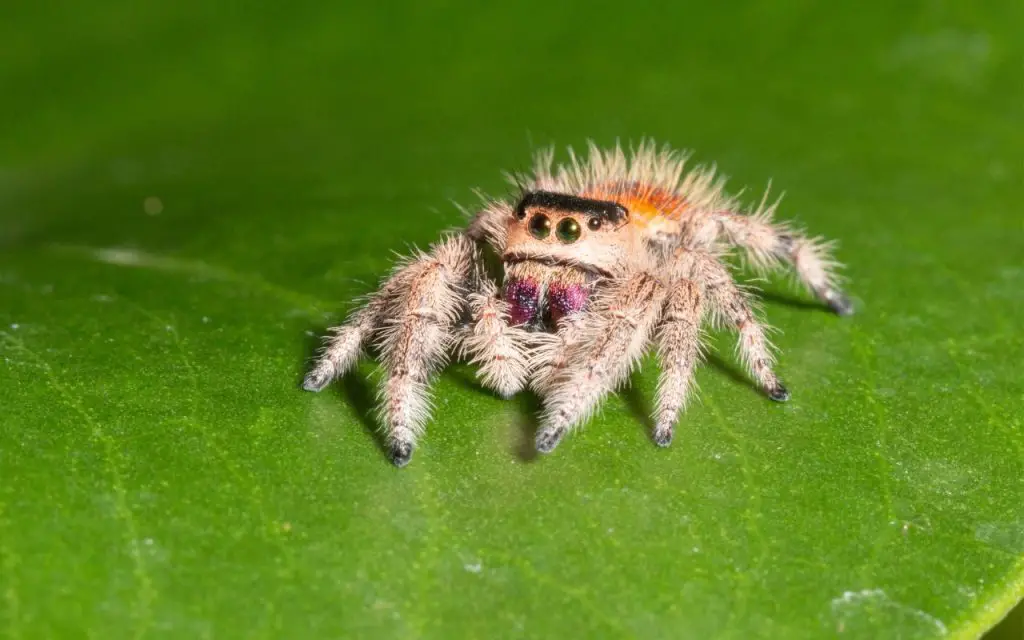
What do most jumping spiders eat?
Insects such as flies, moths, and grasshoppers are the primary prey of jumping spiders. Although it has been documented that they will occasionally consume nectar, they mostly feed on meat.
In general, jumping spiders will consume anything that they are able to grasp with their chelicerae (jaws). Their preferred foods are flies, mealworms, moths, and other tiny, vulnerable animals such as these.
Can I feed my spider ants?
It is not recommended that you feed your spiders ants. Ants are known to create formic acid in their bites, despite the fact that they appear to be quite little and innocuous.
This acid might potentially be harmful to your spider. There are several species of black ants, all of which contain this poison.
A good idea can be found in the presence of black carpenter ants in the United States. You’ll want to keep your spider away from these ants, as well as weaver ants, since they can give it a painful sting.
The bite of another type of ant, known as red ants or fire ants, really contains venom that is harmful to mammals, including humans. This makes them a less desirable alternative.
In spite of the fact that jumping spiders sometimes eat ants, it is best to avoid them if possible. It may be a potential threat.

